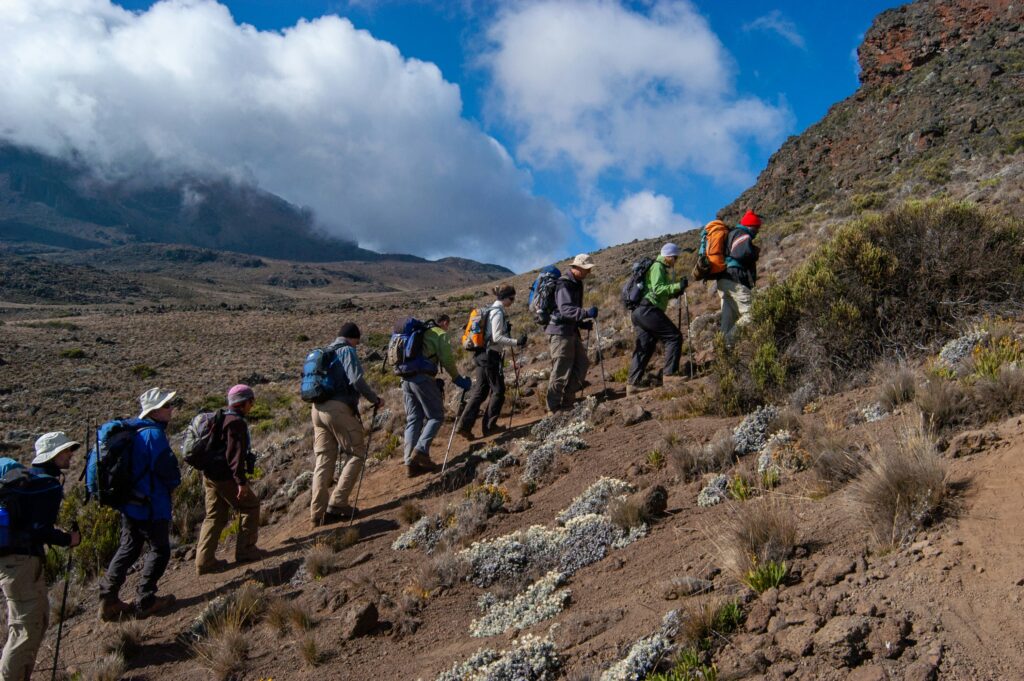Mount Kilimanjaro stands majestically, its snow-capped peak piercing the Tanzanian sky. To summit this iconic mountain is to embark on a journey of self-discovery and unparalleled adventure. But choosing the right time to undertake this challenge can mean the difference between a triumphant ascent and a gruelling struggle against the elements. In this guide, we’ll explore the factors that determine the best time of year to climb Mount Kilimanjaro, ensuring your expedition is met with optimal conditions and unforgettable experiences.

Understanding Kilimanjaro’s Climate
- Equatorial Realities: Weather Patterns on the Mountain
Mount Kilimanjaro’s proximity to the equator blesses it with a unique microclimate. Despite its location in Africa, Kilimanjaro’s summit boasts glaciers and freezing temperatures year-round. However, as climbers ascend the mountain, they traverse various ecological zones, each characterized by distinct climates. These zones include lush rainforests, alpine meadows, and barren arctic landscapes.
- Rainy Season Blues: Navigating Precipitation
One of the most critical factors influencing the climb’s difficulty is the presence of rainfall. The rainy seasons, typically from March to May and November to December, can saturate the mountain’s slopes, transforming trails into muddy quagmires. Heavy rainfall diminishes visibility and increases the risk of landslides and washouts, making specific routes treacherous and impassable.
- Chilling Winds: The Impact of Temperature
While Kilimanjaro’s equatorial location ensures relatively stable temperatures year-round, climbers must contend with decreasing temperatures as altitude increases. At the summit, temperatures can plummet to below freezing, exacerbating the physical toll of the ascent. Additionally, fierce winds can whip across the exposed slopes, further intensifying the cold and testing climbers’ endurance.
Choosing the Optimal Climbing Season
- Peak Season Splendor: Climbing During the Dry Months
For most climbers, the optimal time to tackle Mount Kilimanjaro is during the dry seasons, which span from January to February and June to October. During these periods, minimal precipitation offers clear skies and excellent visibility. The absence of rain facilitates safer trekking conditions and enhances the breathtaking vistas, allowing climbers to fully appreciate the awe-inspiring beauty of the surrounding landscapes.
- January – February: Basking in the Glow of the New Year
The beginning of the year heralds the arrival of one of Kilimanjaro’s peak climbing seasons. January and February boast mild temperatures and relatively dry weather, making them ideal for summit attempts. As the world celebrates the dawn of a new year, climbers can embark on their journey of renewal and conquest, ascending towards the summit under the African sun’s warm glow.
- June – October: Embracing the Crisp Air of Winter
During the Southern Hemisphere’s winter months, Kilimanjaro experiences its second dry season, from June to October. These months offer prime climbing conditions, with clear skies and cooler temperatures prevailing. As the African plains below bask in the warmth of summer, climbers on Kilimanjaro revel in the crisp mountain air, relishing the refreshing challenge ahead.
- Shoulder Season Considerations: Weighing the Trade-offs
While the dry seasons are undoubtedly the most popular times to climb Kilimanjaro, the shoulder seasons are also attractive. The months immediately preceding and following the rainy seasons—namely, November, December, and March to May—offer fewer crowds and lower prices. However, climbers must be prepared to contend with the potential challenges posed by inclement weather, including slippery trails and reduced visibility.

